Sunday
Arts and PoetryDiscovering Sound
In this Shambhala Times exclusive interview, we take an in-depth look at the life and art of Herb Elsky, resident of Mas Marvent, France. More of Mr. Elsky’s work can be seen online by clicking here.
edited by Ani Dawa Chotso
“Something the Vidyadhara Chogyam Trungpa Rinpoche (VCTR) always said about dharma art is that it’s dharma first. I always found that interesting and contemplate it a lot: why he would say that?” asked Mr. Elsky.
“The teachings about perception and first thought best thought apply to everyone, and we use them as the basis for artistic process. Clear and direct perception is very important – if you don’t have clear perception, what kind of perception do you have? Unclear/confused? How can you have any real communication if your perception is confused? You are only talking to some kind of echo of what you want to hear or see.
“So that makes a different perspective on what is art. It makes it very vital for everyday life and everything we do. This idea of art is much bigger – your whole life is your art, every gesture that you make is art, if you see it that way.“The teachings on first thought, best thought makes me think about genuineness, about being completely authentic and being able to really express your own voice. You aren’t imitating or trying to please someone else, but communicating from deep within yourself – what do YOU have to say?
“I say that to people: who are YOU? I don’t want to hear a clever answer or any particular thing, I want to hear who the person is, that’s what is interesting to me. It’s not easy to do – it’s a real practice to learn how to be completely yourself. Trusting yourself. It’s easy to say, but what does it really mean? How can we learn to be that daring and honest to express who we really are.”
On Meeting the Vidyadhara
Mr. Elsky was 28 years old when he met VCTR. He had his masters’ degree from UCLA in pictorial art, painting, but was feeling very blocked in his art. He had had some kind of flash about spirituality and was seeing every swami and yogi that came to town.
“I was really very lost,” he told us. “Then I met the Vidyadhara and he was interested in art. It was a big flash for me.” He had a chance to tell VCTR that he was “doing some paintings.” VCTR replied that he “was putting canvases under trees and letting the leaves fall down on them.”
“When he said that I thought, well I’m in the right place,” Mr. Elsky remembered.
“At that time I was working with polyester resin. I was also macrobiotic and having a crisis, trying to purify myself and also working with this toxic material,” Mr Elsky continued. At a certain point in 1972, he gave VCTR one of his resin sculptures and then tried to stop doing resin. He was trying some different kinds of things that seemed more natural, trying to be more earthy and natural and less toxic.“I had another interview with VCTR and showed him pictures,” he said. “He said, ‘you should return to the clear, which means resin.’ I said, ‘it’s expensive, difficult to work with and it’s toxic.’
“He just looked at me. I interpreted that look to mean, I told you what I think, you can take it or leave it. Then he said, ‘the setting sun artist jumps from one thing to another, the GES artist takes one thing to great depth.'”
So for the next 25 years, Mr. Elsky continued to work with resin. He bought protective gear, started new techniques to work with it. He did that until he moved to France in 1995.
Discovering Sound
“I knew my resin time was over. I felt somehow like something was dying. I wanted to be in another dimension where I didn’t know anything anymore. I wanted to invent my life again. It took me 5 years to start working, I felt somehow something was dying. So I went into the barn and started making sculptures out of whatever I could find,” he said.That began a long painful search for what to do now that he was no longer working in resin. He experimented with projection paintings, a cross between calligraphy and kyudo, where he made brushes out of plants, stirred them in a big bucket of paint and make one stroke on paper. “An amazing array of images that would appear. All I could do was create the environment and then make the gesture,” he described.
He went on to make infinity boxes, big boxes with little holes, and inside covered with mirrors so whatever is inside the box, there’s a million reflected to infinity.
Click here to listen to a short piece of music made by the sounds of cows distorted. Cow Music
He found himself creating and making miniature theaters.
The winter of 2004-2005 was really cold. His studios were in a huge barn, which was in terrible shape. The roof leaked like a sieve, the beaten earth floor was a swamp. Big cold drafts of wind would cut right through the walls.Mr. Elsky told us how he “was plagued by doubts. It was a tsunami of doubt. There were little Tibetan yippy dogs barking in my brain saying ‘give it up already, just work in the yard, fix this barn, etc.’ It was a really awful moment. Then there was an internal scream from my guts that said ‘Just shut up and work.’ I just let my hands do the walking, whatever the hands want to make, let them do it.”
“I took out this old cement mixer I had and took a 12 foot stick to see if it could make rhythms. And it worked. That was the seed syllable for everything that followed,” he said. “I started to discover that there’s sounds hidden in everything. I could invoke the sounds that are hidden in things. It became a whole other path for me.”
He learned how to play guitar strings with electric ceiling fans. His rhythms attracted musicians, and now jazz musicians want to come make music with him. “I have no music training. I never could have dreamed I would enter this dimension,” he continued.His work with sound recently lead to creating a ceremony in a theatre that was once a slaughterhouse for the souls of the animals that were killed in that place, using his rhythms and soundtracks of cows to create a movement collage with African dancers. (Click here to see this article for more info on the M’bongui performance.)
The Koan
“The koan for all of us is how to work with creating enlightened society,” he muses. “I see so much art pollution. They show 34 murders a day on TV, it’s frightening. These images are powerful. So what I really want to do is create an inspiration machine.“I want people to feel like they could make something to express who they are. That has a real effect on society. That’s on my mind a lot. I think if you say you are an artist, you are taking on a real responsibility. You are taking on presenting with integrity something positive to the planet.”
~~
Visit Herbert Elsky’s website at: herbelsky.com.

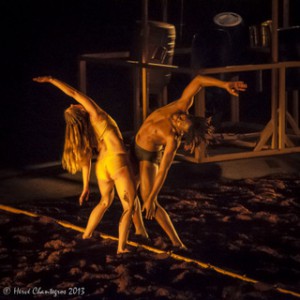
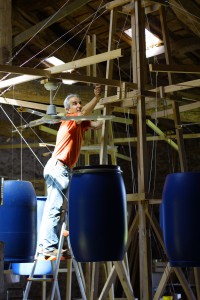
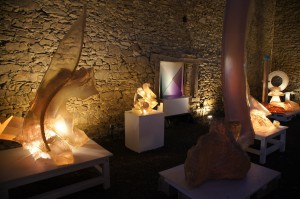
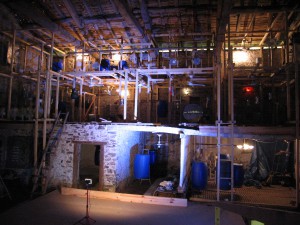
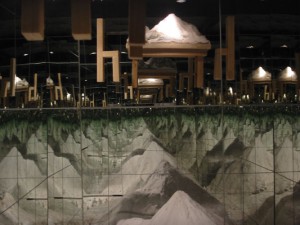
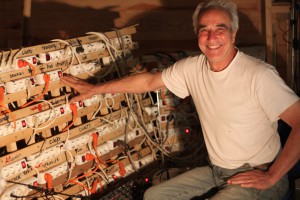
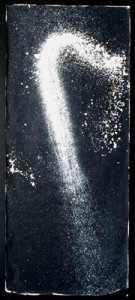
















May 6, 2013
Reply
Thank you
I really like the cow music its very hunting. I have a question about being your self with your work, what if you are kind of confused?
I get frustrated by what I experience in my own and others work- As a Kind of cover up, relieing too heavaly on techniques rather then genuin expression- techniques should be training- like learning a language which eventually one uses to express their own thoughts- but often art is so scary we just get stuck regurgitating and trying so hard. Maybe thats why you went through such a difficult process, you were geting unstuck which is scary and unconvertible. I think in genuin art the artist has to be Turned On which is actually kind of out there. What do you think? Thanks for sharing your experience, I appreciate hearing about your process and mixing that with your connection to CTR.
May 6, 2013
Reply
Thank you for sharing this story. I really liked how you said you let your hands do what they wanted to do and found out that there is music waiting inside everything. I took a couple of classes from five-time Grammy award winner Glen Velez last year. He’s mostly known for frame drum and overtone singing. In watching him I really felt that that this realization was one of the things that made him such a great musician because he has this ability to pick up any object and get sounds out of it that you would never think are “in” there.
Here is a short video example of him with a tambourine: http://m.youtube.com/#/watch?v=sVJtl0WaSLo&desktop_uri=%2Fwatch%3Fv%3DsVJtl0WaSLo
May 5, 2013
Reply
Thanks for such a profound teaching on perception that also reveals the precious dharma path of Herb Elsky.